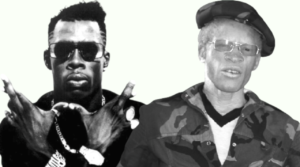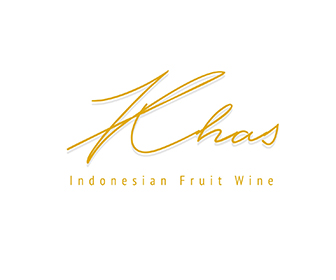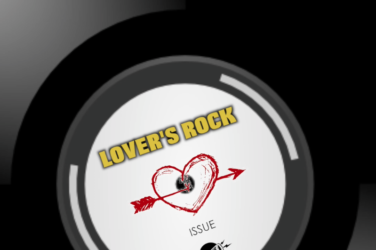Literal definition of ‘dancehall’ would be a dancefloor or a space to dance. It has a dimension of space and time. As a subgenre, dancehall is a revival of reggae since the 1980s. However, there hasn’t been any fit and definite history of its existence.
The general study of dancehall is dominated by musical discourse from lyric, its politicization and way of the delivery. Starting from this point, dancehall music becomes a gate that carries a very vast general view upon it. A point of view which many times denies other variables such as geography and dancehall as a performance and its scenesters besides the DJs of the dancehall itself.
Culture as a map that affirms the reality of its existence is indeed cannot cover all the territory. Cartographically, there are still many territories which escape the inclusion and leave the unexplored as an area perceived as non-existent.

Sonja Niaah Stanley, a researcher from University of the West Indies (UWI), Jamaica in her research entitled ‘Dis Slackness Ting’: A Dichotomizing Master Narrative in Jamaican Dancehall brought an ecological picture, the scope of the life of dancehall. She gave a broader view where the lyrics, the performers, space of the performance, and the patrons, (those who are responsible, the business people) mutually interact. They give profundity on the dancehall music stage.
This allows the mapping of context and basic identity that lead the context to the focus which is described as dance or subculture dance.
As a music dancehall also brings the same experience as other music, that is to affect the audience in facing a complex structure and moving from an impermanent relationship. The sonic interwoven of tone, beat, good harmony, and contrast colour of tone. Altogether they give an example of a community not by unity but by its diversity.
The heterogeneity in dancehall appears in the repeated theme in many hits released as well as the performance of the artists. Reincarnation of reggae is said to give birth to dancehall in the 1980s and can be a window into which we get to learn about the culture of dancehall. The death of Marley and the birth of dancehall became a consistent argument in many historical references. This would lead to a broader opinion of JLP’s “Reaganomics & Thatcherism,” the ruling party of that time to the massive drugs and guns which said to be the excess of neoliberal political policy that shifting and giving birth to new understanding upon the effort to reach out for wealth rapidly, and narcissism (show off culture and fabulous) where the ‘ghetto fabulous’ started to appear explicitly. This thing underlies a shifting in policy and philosophy far from various policies of Michael Manley’s regime in the 1970s.
The lyrics started to reflect this new understanding and DJs like Yellow Man and Shabba Ranks were considered to be the mirror of the shifting from social concerns of the 1970s towards a new era of dancehall with sexuality, misogyny and violence. They become what would be called by the previous generation as Babylon.

Shabba Ranks with his ‘Wicked in bed’ injected a discourse to dancehall which by Selewicz and Boot in their book, ‘Reggae Explosion’ (2001:172) is written as a distinctive new genre in music characterized by the union of ‘digital beat’ and ‘slackness’, between moment and music where lyrics about guns, woman’s body, and masculinity become a unity.
The word slackness is so attached and almost like a brand to dancehall. Carolyn Cooper, an observer and expert of cultural studies on dancehall argued to defend ‘slackness’ from many objurgations. She put ‘slackness’ on a broader discourse of Jamaican popular culture and also about the power relation behind it. Up to that point, the history of reggae through the chapter of post dancehall era of 1980s has linked the relation between economic politics and the death of Marley toward the revival of ‘slackness’. It has become the main narration in dancehall which comes between so many dichotomies.
There are some common dichotomizing narration in dancehall according to Cooper like: hateful lyric vs love song; spiritual vs profane; singing vs toasting; riding riddim vs creating music; official English vs Patois; roots reggae vs dancehall; revolutionary vs ragamuffin; mainstream vs marginal.
Throwback momentary, Jamaican popular music from the 1950s since the era of rhythm and blues was like one destiny to the dance floor. Manifestation of the difference born at the era of dancehall was an influence. How a style of a performance can be very influential to determine what will come out in vinyl. Dancehall is very suggestive.
The progress of dancehall performative style, new generation of musicians with their freshness, reliance on pre-recorded rhythms, dance movements or new dance, more explicit lyrics, and sound clash make dancehall become an inspirational agency.
Meanwhile, the existence of DJs for live performance in dance, technological advancement, commodification and the number of consumption of this new form keep rising just to signify that the use of vinyl has become a way to play music in dance’ space and it keeps evolving.
Based on these characteristics, dancehall is more than just a chronological sequence of Jamaican popular music. Dance floor or dance hall is a destiny as the spring where those musics came from. Up to this point of introduction, the authenticity of dancehall is getting even clearer. Just like the social climate which is affected by socio-political factors, the craftsmanship of artistry would also reflect this phenomenon, and so is dancehall. Other variables beside those dichotomies above indicate that the suggestive model of music which stimulates dancing becomes the characteristics of dancehall and the same is true with singing. Just like an accomplished orator with words full of agitated dictions that can lit the spirit of dancing. It will lively up the dancehall performance, a very authentic and special capacity.

From Indonesia, Conrad Good Vibration one of reggae soloists who adored dancehall smilingly contends that: “Honestly, to me dancehall is just like speaking in tone! You don’t have to be excellent in singing.” But he also added “The lyric is intensed, tight flow tempo and poetic rhyming are significant elements in dancehall one shall master.” Meanwhile, Mighty Che, One of Indonesia’s dancehall MCs argues on how powerful is the existence of dancehall as a culture that he concluded:: “this music (dancehall) can carry any message, even it can be a weapon to educate the mass about social issues and life. This music can be a medicine as well as a weapon.”
Both of them justified the essential statement from Cooper that will close the issue of Kultur this time: “dancehall is an inclusivist neo-African folk aesthetic, a carnivalesque fusion of words, music and around the centre pole and on the common ground of the dance floor.”(1993:138)
(Text: Yedi & Sam)







Show Comments (0)